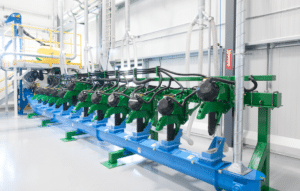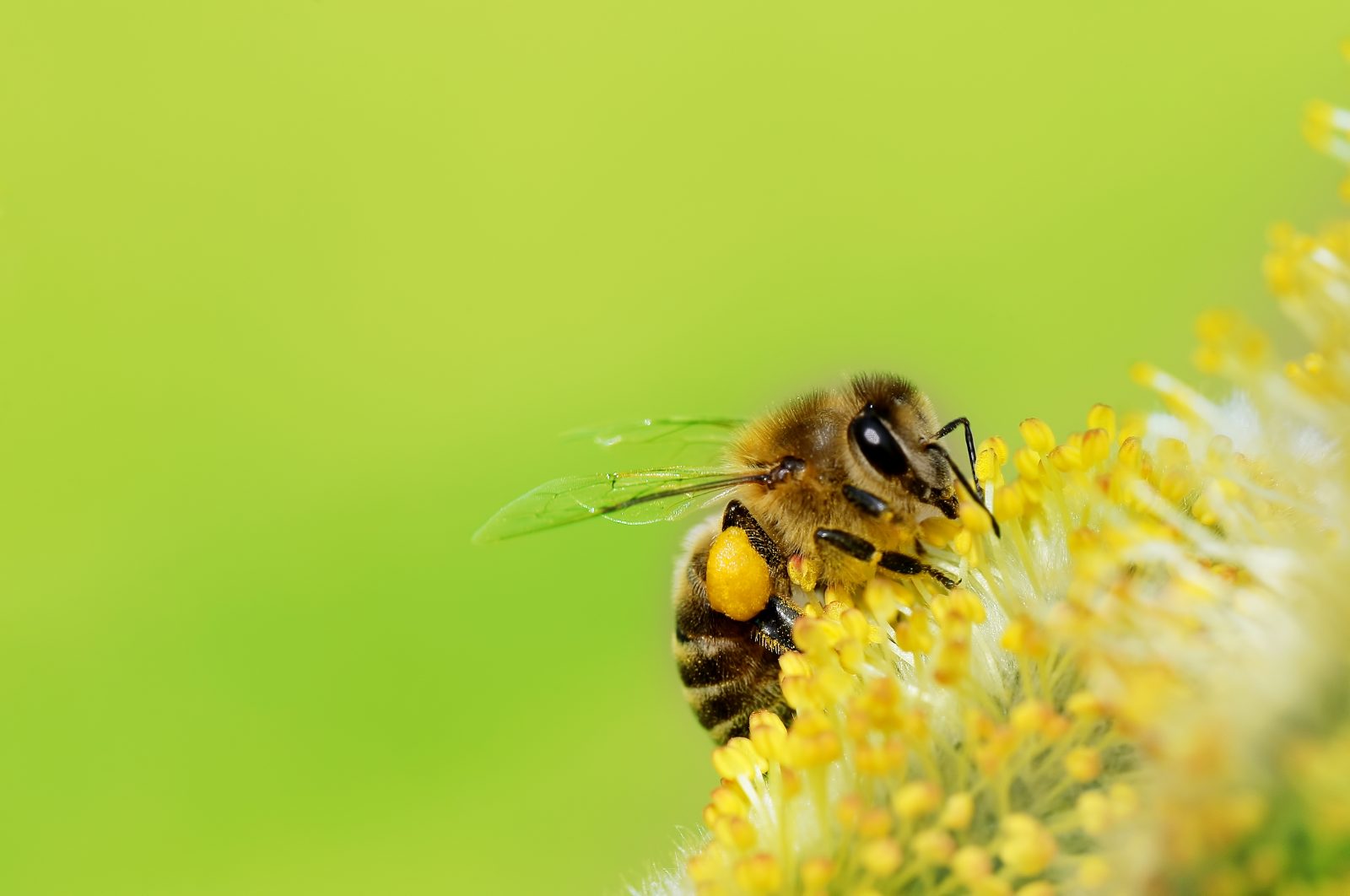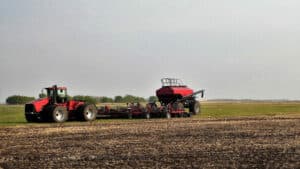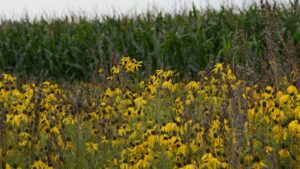With the 2019 growing season approaching, it’s important to keep seed treatment stewardship top-of-mind, from the beginning of the process at the treatment facility to end of the journey at the field.
Seed treatments are generally accepted as a safe, extremely precise way to deliver the necessary protection for seeds and seedlings. But when dealing with herbicides and fungicides, stewardship is always important, even when risk is low.

“We want to further minimize what is already a small risk,” says Jane DeMarchi, American Seed Trade Association vice president of government and regulatory affairs.
Safety is stressed during each phase of handling treated seed, from before the chemicals are applied, to after the seed goes into the ground.
“We look at the full continuum, starting with preparing the seed and ensuring it is cleaned properly,” DeMarchi says.
Preparation
Seed retailers need to be educated about benefits, risks and best practices as they make product recommendations.
“There is a growing awareness about the condition of the seed as being important, so we are seeing more companies focus on cleaning the seed to get the best, safest treatment possible,” DeMarchi says.
“Farmers also need to prepare for planting by communicating with nearby beekeepers about local hives.”
When farmers are choosing treated seed or non-treated seed, they need to be prepared for the responsibility that comes with their investment.
Tim Dahl, agronomic service representative for Syngenta, explains that if a farmer plants 3,000 acres, they could have the cost of a new pickup truck invested in seed treatments.
“They aren’t going to buy a new pickup and not take care of it,” Dahl says, adding that they think about seed treatments the same way. “It’s important to protect that investment and make sure it stays on the seed where it can do its job.”
Development
Sandy Baker, Syngenta Seedcare Application lead for North America, says there have been many improvements in seed treatment formulations to improve safety and efficacy.
“It can take up to 15 years to discover and launch a new product, and up to two years for our formulation development team to fine tune a product and optimize it for application,” Baker says.
Syngenta’s Seedcare Institute is able to do extensive testing on samples to check multiple parameters to determine the safest and best way to handle products, reduce exposure and ensure dust-off levels are significantly lower than limits in the European Union allow.
Baker says the U.S. does not have an official threshold, which is why they follow the European standard of less than 0.75 grams per 100,000 seeds on corn.
Treatment

Dahl says the majority of corn gets treated in a production facility while many soybeans get treated downstream.
Syngenta provides training programs and safety labels to ensure those handling the seed know the safest way to do their job.
Advances have also been made on the equipment side, with the use of integrated dust management systems in treatment facilities, as well as with machinery on the farm.
Some applicators who have been working with treated seed for many years have been able to compare newer technologies to older products.
“If they handled some of the older formulations, it’s easy to see these are better in terms of the amount of dust and ease of use,” Baker says. “It’s a cleaner working environment, especially when engineered formulations are used in combination with the new polymer technologies, which ensure the chemical stays on the seed during bagging and transport.”
Baker says awareness for validated recipes is also on the rise.
“Because of the several quality assessment tests that we do, we have seen a great improvement in the user experience of seed treatment products,” he says. “We have also seen a great response to those recipes from customers.”
Storage
Proper labeling and storage is also important. One of the goals of the Seedcare Institute is to provide a proper testing facility for variables that occur in the real world, so that product recipes can be perfected.
“One of the things we had an issue with a few years ago was the temperatures going from cold to hot very quickly,” Dahl says. “The beans heated up and got a little sweaty, so that required a lot of testing for us to determine the best course of action when issues like that happen.
“The facility has temperature-controlled rooms that can mimic those situations. This allows us do the necessary research to make the best recommendations to our dealers for how to keep that treatment on the seed and keep farmers planting during the busy spring season.”
Handling
From the grower standpoint, the design of many new planters has greatly reduced any dust-off risk or exposure from treated seed.
“These new machines have been designed so any dust goes down and not up,” DeMarchi says.
Seed flow lubricants have also greatly improved stewardship in this phase of the process.
One of the main concerns with on-farm handling is the proper cleanup of spills, because of the temptation for wildlife to snack of spilled seeds.
“Seed spilled on the ground is attractive for birds, but because of the treatment, it is a potential risk, so those must be properly cleaned up,” DeMarchi says.
Awareness
“One of our jobs is making people aware, which we do through social media channels, farm radio campaigns, and through information given out at state and regional grower meetings,” DeMarchi says.
Baker adds that Syngenta’s training programs are especially helpful.
“We are able to bring customers to our Seedcare Institute at Stanton, Minn., to do hands-on training, and our application specialists also travel to do classes out in the field. The idea is to create awareness around best practices and teach how to handle the products safely,” Baker says.
The response from training programs has been positive. As Dahl says, farmers are usually eager to learn how to best protect their seed investments.
“These treatments are the most precise way to protect seeds and seedlings from early season pests below the soil,” DeMarchi says. “They are very targeted solutions, and the benefit for protecting the seed is tremendous.”
It’s important to remember that seed treatments can’t work if they aren’t actually on the seed.
“There is no way to recover a crop if the seedling is destroyed, other than replanting,” DeMarchi says. “The use of seed treatments has greatly increased the percentage of seedlings that ultimately result in a healthy plant.”
Dahl also knows these considerations are not just about safety. It’s also about economics.
“Farmers are acutely aware of the importance of maximizing the efficacy of seed treatments,” Dahl says. “They spend a lot of money on that seed, maybe $150 an acre for corn and $50 or $60 an acre for soybeans. They are invested in keeping that product where it belongs — on the seed in the ground.”
Baker says it’s important to recognize the long-term significance of following guidelines as well.
“We want to ensure the safety of these products, but also protect the choice to use them,” Baker adds. “If they aren’t used correctly, we risk losing the opportunity to use such innovative technologies in the future. A safe, sustainable future is the goal.”
In the end, it all comes back to creating a sustainable future for agriculture. It’s in everyone’s best interest to keep seed stewardship top of mind.
“We make our living off of the land, and we need to steward our technologies to protect that,” Dahl says.













